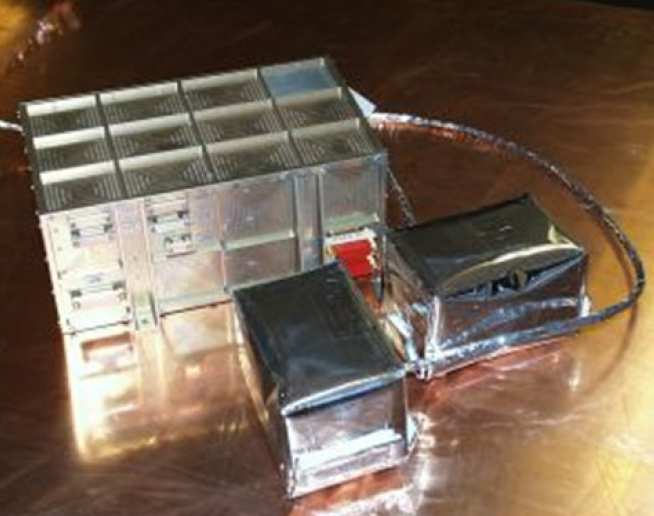Objective:

To provide magnetic field measurements of the Earth's magnetosphere from a few tens of nT in the outer magnetosphere to over 1,000nT at closest approach.
Key drivers:
To provide four identical instruments (one for each spacecraft), in a tight time schedule, able to survive the tough radiation environment of the mission.
Radiation Tolerance:
- Mission prediction: 100krad total dose.
- Magnetometer design: 100krad total dose tolerant with box providing 1.2mm Al shielding
| Cluster Magnetometer Key Performance Criteria | |
|---|---|
| Full range of instrument | ±65536nT |
| 5 ranges to provide high resolution at lower fields, and still maintain wide overall range | |
| Resolution in lowest range, ±64nT | 7.5pT |
| Sensor Noise density @1Hz for temperature range -35ºC to 25ºC | <10pT/√Hz |
| Sensor: Offset Drift between -35ºC and 25ºC | <0.03nT/ºC |
| Sensor: Scale Factor Drift between -35ºC and 25ºC | <0.05% |
All four Cluster Spacecraft carry a dual sensor fluxgate magnetometer instrument, sampling the DC ambient magnetic field along the orbit trajectory in the frequency range DC to 10Hz in Normal Mode and up to 32Hz in Burst mode in the field range from -65536nT to +65528nT. The instrument consists of two tri-axial fluxgate sensors and an electronics box.
In order to minimise magnetic interference from the spacecraft itself, the magnetometer sensors are mounted at the tip, and inwards (1.5m from tip), of a 5.0m radial boom. The control electronics is housed inside a box on the Spacecraft MEP (Main Equipment Platform). Both OB (Outboard) and IB (Inboard) sensors are connected to the Electronics Box via a lightweight harness. The Electronics Box houses the instrument power and sense electronics controlled by a central DPU (Data Processing Unit).
The Cluster Magnetometer was designed and built by a team comprising of
-
Space & Atmospheric Physics Group of Imperial College London, U.K.
-
NASA Goddard Space Flight Center, Greeenbelt, Maryland, U.S.A.
-
Space Research Institute (Institut für Weltraumforschung, IWF) of the Austrian Academy of Sciences in Graz.
-
Institute for Geophysics and Extraterrestrial Physics (IGeP) of the Technical University Braunschweig, Germany.
See design overview for a block diagram showing the contributions from each institution
For further information please see: